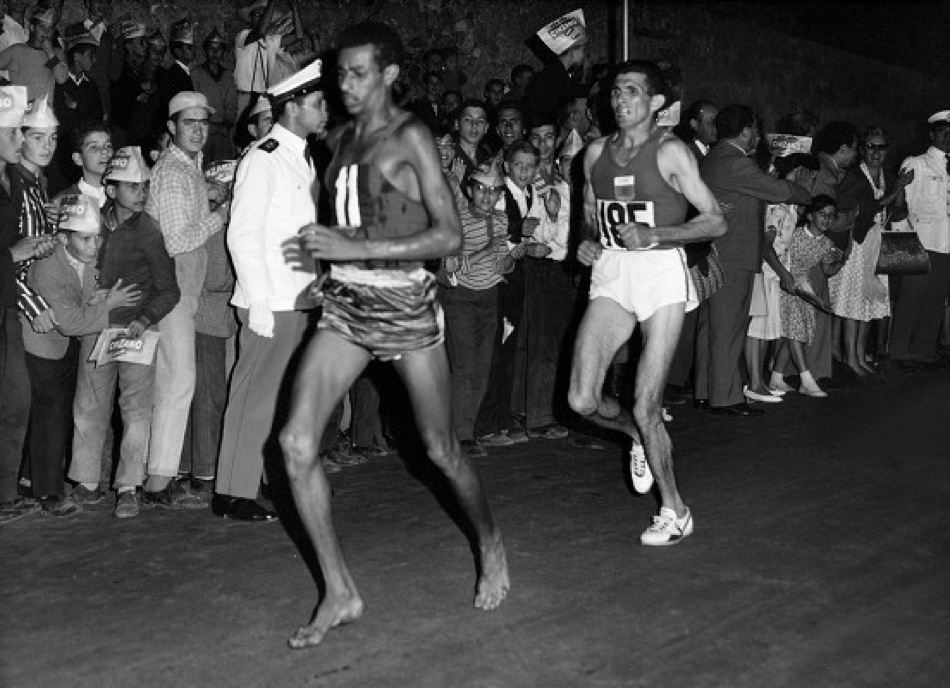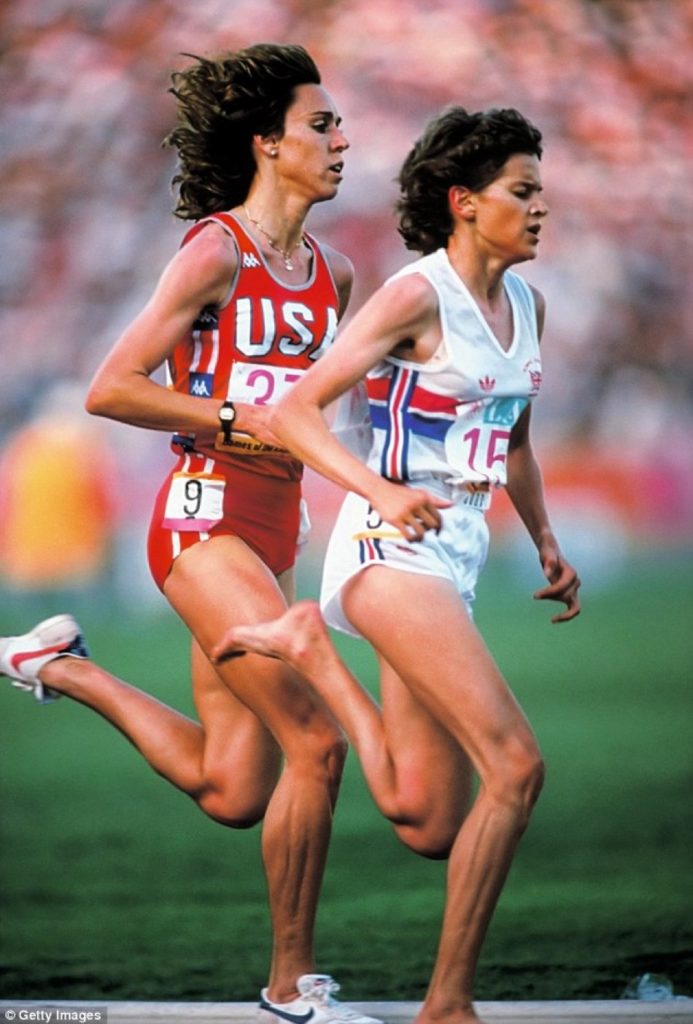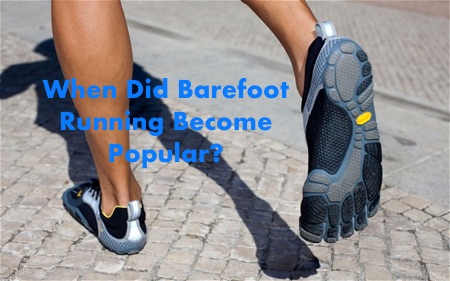When Did Barefoot Running Become Popular?
All through the ages Barefoot running, either shoeless or thinly shod has been a way of life. History tells us tales of the runner of ancient Greece who ran barefoot. Pheidippedies, the first marathoner, was sent to run from Athens to Sparta to ask for assistance before the famous battle of marathon. He ran over one hundred and forty miles (140 miles), getting to Sparta the next day.
In the modern day, it’s a different story. In recent times barefoot running has become popular on many occasions. First, in 1960, when Abebe Bikila of Ethiopia won the Olympic marathon in Rome Running Barefoot. Then 20 years later in the 1980s, South African runner, Zola Budd Pieterse became known for her barefoot running style. Next was after the 2009 publication of Christopher McDougall’s book, Born to Run.
In this post, we will take a look at when Barefoot running became popular.
Modern Barefoot Running Highlights
The 1960s:
Barefoot running was thrust into global prominence when Abebe Bikila of Ethiopia won the Olympic Gold medal in the marathon at the age of 28. The story goes that Adidas the designated Olympic shoe supplier at the time ran out of shoes in his size. What they had available was too small and uncomfortable for him to run in, so he opted to do the race barefoot.
His training for the Olympics was done barefoot anyway so this was not too difficult for him to do. He attracted attention because he was the first East African to win a medal. Abebe Bikila set an Olympic world record time of 2:15:16.2.
Four years later during the 1964 Tokyo Olympics, Abebe’s fame had already reached all over the globe. Six weeks before the big race, Abebe was taken ill with Appendicitis. He underwent surgery amid a public outcry for a proper medical council to decide on the procedure.
The day he arrived in Tokyo, Abebe hadn’t fully recovered from the surgery and was still limping. However, the care Abebe received from the Japanese medical team helped him recover rather quickly and unexpectedly. He went on to defend the His Olympic title and break his record again in the Marathon that year too.

Abebe Bikila, Ran Barefoot and Won the Olympic Marathon Gold Medal in 1960
Bikilas Gold medal victory in Rome that day will go down as one of the most famous in modern barefoot running history.
During the 1960s British runner, Bruce Tulloh also competed and quite a few races barefoot. He Went on to win the gold medal in the 1962 European Games 5,000 metre race.
The 1970s:
In the 1970s, Shivnath Singh, one of India’s greatest long distance runners, was known for always running barefoot with just tape on his feet. Singh represented India in the Asian games and twice at the Summer Olympics (1976 and 1980). He placed 11th in the 1976 Olympic Men’s Marathon. He started but failed to complete the 1980 Olympic Men’s Marathon in Moscow. He was noted for running barefoot all his running career.
The 1980s and 1990s:

Zola Budd Running Barefoot in the 1984 Olympics – (Photo Getty Images)
Enter South African runner, Zola Budd Pieterse, she became known for her barefoot running style, training and racing barefoot. She would win the 1985 and 1986 IAAF World Cross Country Championships.
Despite being a world-class athlete, she could not compete in the 1984 Olympic games as a South African as South Africa had been banned from competing internationally before the start of the Tokyo Olympic games in 1964. She was later to claim the world record she had won in South Africa earlier officially, while representing Great Britain in 1985, clocking a time of 14:48.07.
In 1984, Budd was granted a British passport and participated in the British team in the Los Angeles Olympic Games in that year.
She also won the Goodwill Games over 10,000 metres, barefoot also, and was the first African woman to win the New York City Marathon in 1994, winning yet again in 1998.
21st Century:
Barefoot running had now gained a small yet significant following. Organizers of the 2010 New York City Marathon reported an increase in the number of barefoot runners participating in the event. Barefoot Running became even more popular following the 2009 publication of Christopher McDougall’s book, Born to Run, promoting the Virtues and benefits of barefoot running. He also wrote about the Tarahumara Indians of Mexico’s Copper Canyon.
Christopher McDougall sets off to find a tribe of the world’s greatest distance runners and learn their secrets, and in the process shows us that everything we thought we knew about running is wrong.
The Tarahumara even to this day run extraordinary distances (over 100 miles) in sandals without experiencing any of the injuries that plague most runners today. He used his study of the Tarahumara to assert that, as humans, we are built to run barefoot. Saying that as a people of barefoot runner they have a more upright body position and shorter strides, landing first on the middle or ball of the foot, rather than the heel, as is often the case when wearing trainers.
McDougall’s vivid story-telling ability in his book, compelling character development and in-depth reporting have great appeal to every range of runner. From newbies runners and seasoned ultrarunners to barefoot walkers and no movers alike.
The book is one of the primary reference points for the barefoot running shoe development in the modern day. The ensuing popularity helped focus the big brands on developing Barefoot running shoes that:
- Were a lot lighter than traditional running shoes.
- Allowed you connect to the ground better because of the zero drop heel.
- Used a lot less material in the construction of the shoe uppers.
The paradigm shift brought about by the book helped runners reexamine the need for a shoe to run. Shoe manufacturers now build lighter models across all categories; you could argue that this, eventually helped traditional shoes explode based on his ideas.
It is also well documented how the remote tribes in Mexico and The native Indians in North America cover great distances in their simple versions of barefoot footwear.
Early Footwear Types
- The moccasin is a shoe that was traditionally made deerskin or soft leather of some sort. The sole is soft and flexible, and the uppers mat have embroidery or beading. They are rooted in Native Indian Culture from North America.
- Huaraches are an open type footwear. They are made up of a sole held together by a system of straps and strings secured around the ankle. They are a derivative of the traditional Mexican huaraches which are built slightly differently.
All the big shoe brands have now Barefoot or minimalist versions of their shoes now in an attempt to meet the demands of a more enlightened consumer.
The most popular barefoot brands include:
Vibram Five Fingers
In 1999, designer Robert Fliri took out a patent for a “five-finger” shoe, first manufactured by Vibram in 2005. Since then the barefoot revolution has been growing from strength to strength.
Merrell Vapour Gloves
These don’t have the patented single toe compartments like the five fingers. They are however very light and flexible and have an excellent toe box to allow your feet to move around with ease. Many Distance runners have excellent things to say about the vapour glove
Xero Shoes
These are a modern spin on traditional barefoot running sandals. They are durable, stylish and affordable. They are unwaveringly inspired by the work of Chris McDougall’s book, Born to Run, and research from Harvard’s Dr Daniel Lieberman. In his book, Chris McDougall talks about huaraches, the running sandals of the Tarahumara Indians: which is a strip of rubber from an old tyre and some string or lace to hold it on.
Xero Shoes are a hi-tech update of huaraches, both in sandal form and closed-toe shoes. They’re incredibly lightweight, comfortable and flexible. They may be worth having a look at.
Wrap up
With the continuation of the popularity of walking, jogging and running in health and fitness, there has been a renewed focus on the feet and their health. The statistics of the injuries sustained from running in traditional shoes make for alarming reading. The rate of injury does not seem to have changed over the years.
Despite the best effort of scientists, they have not been able to crack to code and come up with a shoe that can prevent injury. Working around the issues that have been identified arguably caused by restrictive shoes in the first place, they offer up shoes to match the foot condition. You have shoes for Pronation, Supination and so on. All of which in my view do nothing to address the root issue in the first place.
This undoubtedly has aided the rise in the popularity of barefoot running as the evidence shows that once done correctly it greatly reduces injury. In my other post, I went into great depth about the research and findings done in India, where being unshod especially in the earlier years led to less foot related issues and injuries.
Barefoot Running has been popular for a while now, and there are no signs of that changing. As we all become more aware of the benefits and joys of Barefoot Running and other forms of barefoot activity, it will only continue to get more popular.
